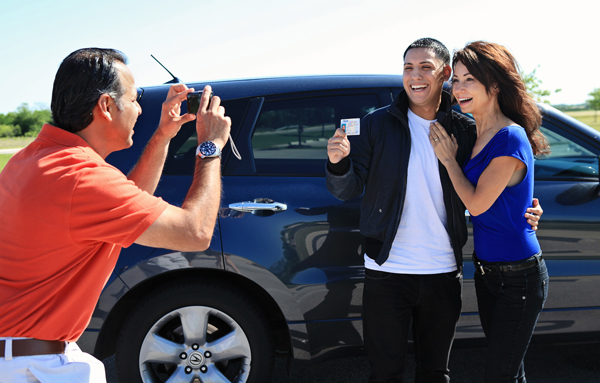- La Feria Community Holds Succesful Business Mixer Event
- Little Nashville to Take Place in Downtown Mercedes
- Lions Basketball Captures District Gold
- La Feria ISD Students Compete in Regional Chess Tournament
- Lions End First Half of 32-4A on a High Note
- La Feria ISD Held Another Successful Parent Conference
- Strong Appearance for Lions at Hidalgo Power Meet
- LFECHS Students Get to Meet Local Actress
- Students Participate in Marine Biology Camp
- Two LFECHS Students Qualify for All-State Band
Parents Play a Big Role in Keeping Teen Drivers Safe
- Updated: July 17, 2015
(StatePoint) For teens, getting behind a wheel can seem like an exciting taste of freedom. But too much leeway too soon can have dangerous results. Car crashes are the number one killer of teens, and half of all teens will be involved in a car crash before graduating high school, reports the National Safety Council (NSC).

Luckily, states with a Teen Safe Driving Coalition are helping change the game. The Coalitions — comprised of state and local government, law enforcement, public health agencies, traffic safety and injury prevention organizations, academia, businesses, teens, parents and crash survivors — were established by NSC and The Allstate Foundation. They have worked at the grassroots level for the last four years to educate parents and teens about the risks of teen driving. Coalitions exist in California, Florida, Maryland, Michigan, New Jersey, New York, Ohio, Pennsylvania, Tennessee and Texas to offer solutions for parents to help teens be safer.
The results have been effective. Crashes involving 15- to 17- year-old drivers in Coalition states have dropped nearly 34 percent since the Coalitions were established four years ago, whereas non-coalition states have experienced just a 19.5 percent drop, according to NSC analysis of federal fatality data.
The Coalitions’ success is in part because they promote a program that indisputably saves lives. Graduated Driver Licensing (GDL), a proven method of reducing teen drivers’ crash risk by 20 to 40 percent, works by maximizing experience while minimizing common driving risks teens face, such as nighttime driving and carrying teen passengers. This allows new drivers to gain experience with less exposure to high-risk scenarios. All 50 states and D.C. have implemented some form of GDL.
“Beyond legislation, parents have a role to play as well,” says Kathy Bernstein, senior manager of teen driving initiatives, NSC. “As the number one resource when it comes to teaching teens to drive, parents should stay involved well after teens get their licenses.”
With that in mind, Bernstein is offering some life-saving tips to families with new drivers:
- Parents should drive with teens regularly even after they receive their license. A minimum of 30 minutes weekly can help ensure that safe driving skills are being employed.
- Talk with teens about managing distractions, such as phones — both handheld and hands-free — the radio, other young passengers, and even beautiful roadside scenery. When teens are driving, they must stay focused on the task at hand.
- Mile for mile, 16 and 17 year-old drivers are about three times as likely to be involved in a fatal car crash at night than during the day, according to “Injury Prevention,” a peer review journal. Parents should give teens opportunities to learn nighttime driving skills with an adult supervisor in the car.
- One of the best ways for teens to learn to drive is by example. So practice safe habits always.
- Visit the Drive it Home site at www.DriveitHome.org for resources, such as weekly driving lessons and the New Driver Deal, a contract which parents and teens can create together that outlines household driving rules and the consequences for breaking them.
“Remember, it’s not whether teens are ‘good kids’ or ‘responsible.’ New drivers share one thing in common — lack of experience,” says Bernstein. “The more practice driving teens get, the better.”


